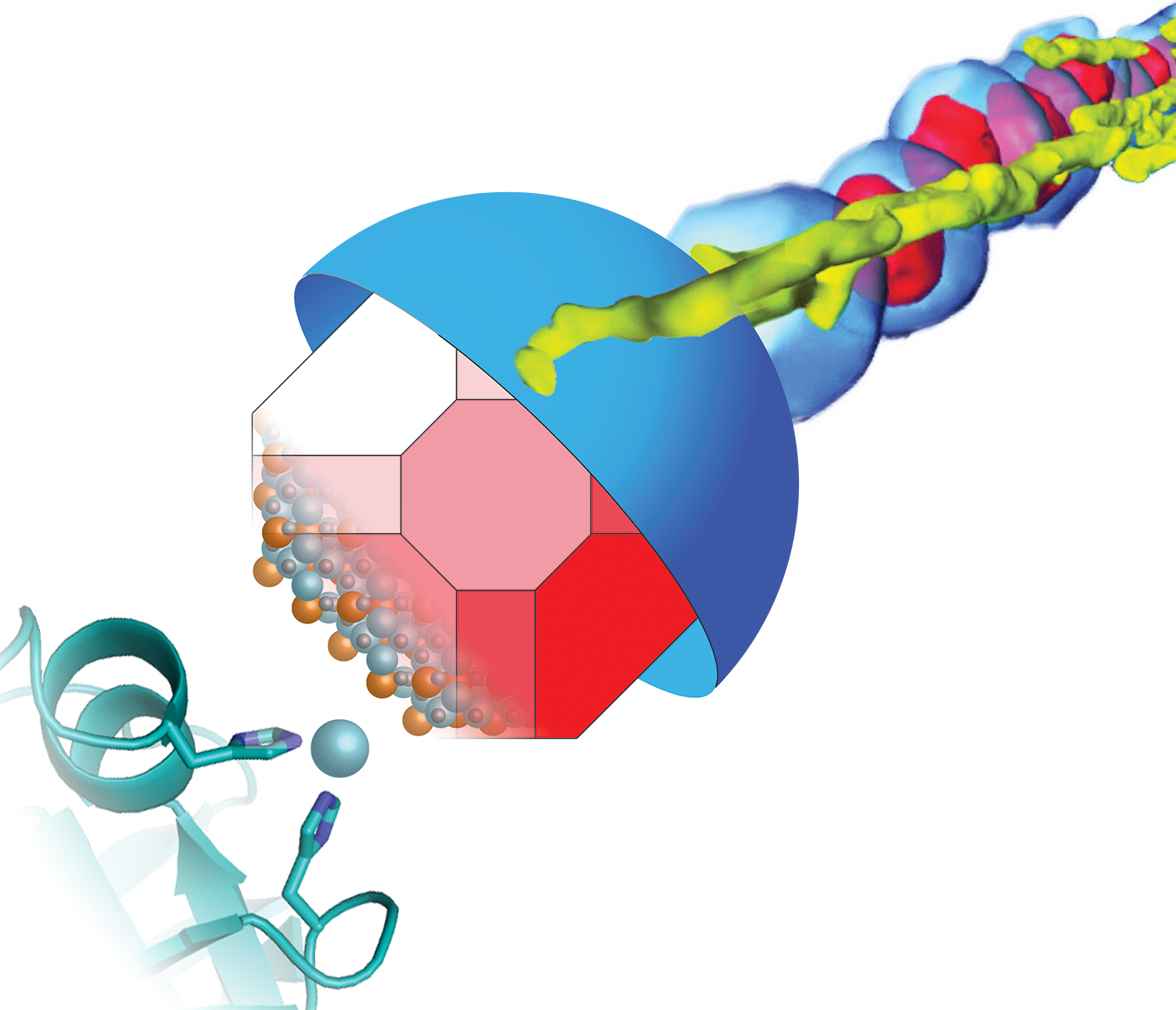
An inactivated protein, MamO (lower left), shepherds iron atoms directly to the growing magnetite crystal (red), which forms inside a membrane compartment (blue). The yellow filaments are proteins that organize the crystals into chains in the cell. All are connected to the bacteria’s nervous system to allow them to navigate relative to Earth’s magnetic field. Image by David Hershey, graduate student in the Komeili lab.
Many bacteria build miniature magnets and use them to navigate their environment, and Arash Komeili has found a neat trick they use to do it.
As reported in this week’s issue of the journal PLOS Biology, Komeili, an associate professor of plant and microbial biology, discovered that most so-called magnetotactic bacteria repurpose a commonplace enzyme and use it as a scaffold on which to assemble iron atoms into tiny magnets.
He and his colleagues discovered this repurposing of a deactivated enzyme in one species,Magnetospririllum magneticum, but when they looked throughout the three largest families of magnetotactic bacteria they found independent occurrences of the same story. A key feature of building magnetic particles is a run-of-the-mill protease – an enzyme that chews up proteins for recycling – that is deactivated.
